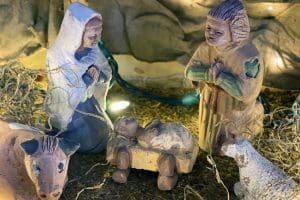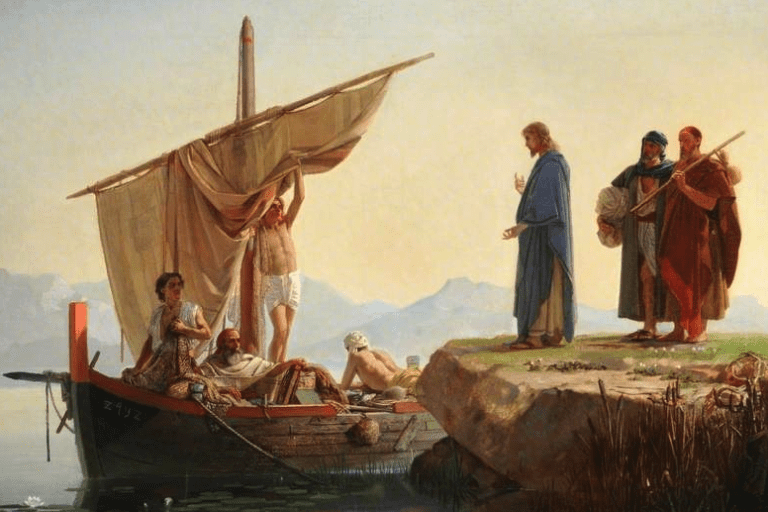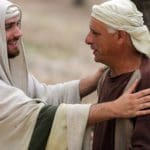In the last article, we discussed the testimony of John the Baptist and the baptism of Christ as it appears in Matthew, Mark, and Luke in the Joseph Smith Translation (JST). We also noted that the testimony of those events was described by John the Apostle, but with significantly more focus on the Savior. In this article, we will discuss the Apostle John’s testimony of the events surrounding the baptism of Christ in more detail.

It is helpful at this point to understand the apparent audience of the writers of the four Gospels.
“The records of Matthew, Mark, and Luke present a somewhat similar collection of materials and have considerable phraseology in common, as well as similar main points, and thus are sometimes labeled as the “Synoptic Gospels” (meaning “see alike”). Even so, each is unique and has much detail that is not shared by the others. John’s record is quite different from the other three in vocabulary, phraseology, and presentation of events.
It appears from the internal evidence of each record that Matthew was written to persuade the Jews that Jesus is the promised Messiah. To do so, he cites several Old Testament prophecies and speaks repeatedly of Jesus as the Son of David, thus emphasizing His royal lineage. Mark appeals to a gentile audience and is fast moving, emphasizing the doings more than the sayings of the Lord. He occasionally gives geographical and cultural explanations—necessary procedure for non-Jewish readers (see Mark 2:26; 5:41; 7:2–13, 34). Luke offers his readers a polished literary account of the ministry of Jesus, presenting Jesus as the universal Savior of both Jews and Gentiles. He dwells extensively on Jesus’ teachings and His doings. Luke is favorable toward the Gentiles and also gives more stories involving women than do the other records. John’s account does not contain much of the fundamental information that the other records contain, and it is evident that he was writing to members of the Church who already had basic information about the Lord. His primary purpose was to emphasize the divine nature of Jesus as the Only Begotten Son of God in the flesh.”1
The chapter numbering and textual highlighting of the scriptures in this article reflect the JST. Red print highlights the JST alterations and blue print with a strike-through shows how the King James Version (KJV) read previously. This can be easily followed in The Joseph Smith Translation, Red-Letter Edition, New Testament in this and coming articles. The complete JST changes are available in an eBook or book version at https://jstrle.com.
John begins his record with the familiar KJV verses about Christ being the “Word”. Immediately, however, the JST gives us a totally different view. Beginning with John 1:1-5, the JST states:

Three hints appear here in the JST about how the Prophet Joseph may have approached his translating efforts. First, it is possible that Joseph’s translation is how the verses appeared when they were originally written. We have no known documents of the original text, nor is it known positively the language John wrote in. Was it Aramaic, Greek, or even Hebrew? The earliest known texts have been preserved in Greek2. Second, it is obvious that Joseph did not translate in the sense that we use the word translate today. If he had, the translation of the Greek for the first verse,
![]()
would have been substantially as it appears in the KJV. Thirdly, it is possible that what the author was teaching was revealed to Joseph, and he modified the verses agreeable to that inspiration. Some combination of the three hints may also have occurred.
When we take a closer look at verses 1-5, we see that Joseph altered the intent of the verses significantly by naming the word as “the gospel preached through the son. And the gospel was the word,”. However, later in the chapter, it states:

These two sections seem to conflict in defining the “Word” as “1…the gospel preached through the son.”, and “16 For in the beginning was the word, even the son, who is made flesh, and sent unto us by the will of the Father.” However, the Gospel, good news or εὐαγγέλιόν in Greek, could easily be another reference, or name if you will, for the Savior Himself. He is the Gospel, the “good news’, and therefore the “word”. Verse 4 seems to substantiate this idea when it states, “In him was the gospel, and the gospel was the life, and the life was the light of men;”. In other words, the Savior is the “word”, the “life” and the “Gospel”.
The Apostle John then proceeded to recount the testimony of John the Baptist. The JST adds significantly to the Baptist’s testimony in John’s book.

Another interesting concept appears here in John 1:19 when the JST augments the phrase “No man hath seen God at any time,” by adding “except he hath born record of the son. For except it is through him no man can be saved.” This added text sets the record straight by informing us that under certain circumstances not only is man able to see God, but the Father and the Son are one in every aspect while physically existing as two individual Celestial beings. To bear record of one inherently bears record of the other.
Another interesting phrase appears in chapter 1 in the following verses: John 1:22-24

Notice in JST verse 22, when asked if he was Elias, the Baptist responds with “I am not that Elias who was to restore all things.” We see here a reference to the Savior’s mission to restore all things that were substantially taken away by the Lord at the time of Moses.3 In this instance, the Savior fits the role of an Elias “who was to restore all things”. The Savior did restore all pertinent things to his Church during his ministry in the Meridian of time. This phrase may also be a hint that the mission of Joseph Smith was known and understood by John the Baptist as well as the Apostle John.
These few JST verses illuminate so many gospel concepts that we could easily write whole chapters, if not a full book, about them. Once again, the clarity about the Savior, His mission, and the testimony of those around Him, as noted here from the book of John, is beautifully illustrated in the JST by the Prophet Joseph.
References
1 The Bible Dictionary, The Church of Jesus Christ of Latter-day Saints. Gospels
2 The earliest writings of John are mere scraps of papyrus thought to have been written between 100-200 CE. Two of these scraps are known as P52 and P90. Both contain only a few phrases from the Gospel of John. The earliest known version of a bible codex (book), the Codex Sinaiticus, has been dated to the 4th century CE. (Codex Sinaiticus – See The Manuscript | John |). The bible as we have it now began to take shape under the hand of St. Jerome in the late 4th century, becoming canonized scripture at the Council of Trent in 1545-1563, and was named Vulgate or the Latin Vulgate. The Vulgate itself was the compilation of translations from the Vetus Latina, and perhaps a number of other manuscripts. Jerome translated most of the Old Testament portion of the bible from the Jewish Tanakh (Hebrew Bible) rather than the Greek Septuagint.
3 In JST, Exodus 34:1-3, the Lord tells Moses, “I will take away the priesthood out of their midst; therefore, my holy order, and the ordinances thereof, shall not go before them; for my presence shall not go up in their midst lest I destroy them. But I will give unto them the law as at the first, but it shall be after the law of a carnal commandment;” (The Joseph Smith Translation, Red-Letter Edition, Old Testament)



















brian stubbsOctober 8, 2025
Very good, Brother Andrew. I learn much from each of your articles.